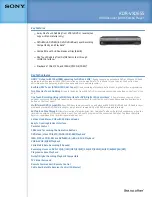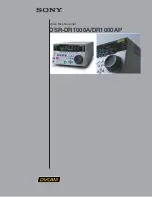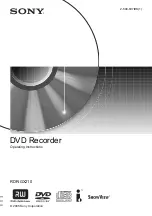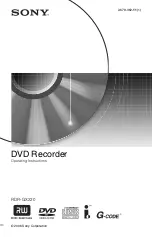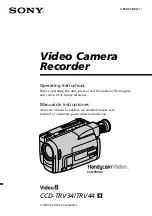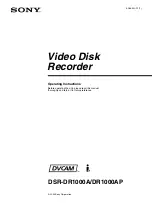
88
Beyond the Basics
MD8—Owner’s Manual
Mixdown
This section provides tips and techniques for achieving the perfect MD8 mix.
•
Balance levels
—you should already have some idea of how you want your mix to
sound. This will, obviously, depend on the application and the instruments being mixed.
Start with all faders positioned at the 7–8 mark. This is an optimum setting with regard
to mixer performance and leaves you with some headroom to increase levels later. If one
particular instrument is too quiet, rather than increasing its level it may better to try
reducing the levels of some of the other instruments. If you keep raising faders
bit-by-bit, you’ll soon end up with some faders set at maximum and no room for further
adjustment. Vocal and instrument levels should be balanced to create an agreeable
sound mix. Nothing too loud, nothing too quiet. What needs to be heard (i.e., vocals,
solo instruments) can be, and backing instruments are where they belong—in the back-
ground.
Also remember that the MD8 allows you to mix the signals of eight recorded tracks along
with 12 additional signals: the eight inputs and the four LINE INPUTs. These are typically
used for MIDI instruments whose signals do not require extensive tonal corrections and that
may be fitted with effects processors. In this case, press the [CUE MIX TO STEREO] button.
You can set the Pan (see below) of the eight MIC/LINE INPUTs and the Level of all Line
inputs. The overall level of the CUE signals can be set using the CUE MASTER control. Set
the [FLIP] switches of the eight input channels to PB.
•
Pan the sounds
—pan allows you to position sounds from left to right in the stereo
field. This is often used to provide space for individual instruments. Bass instruments
and lead vocals are usually panned around center. Rhythm guitar maybe panned to the
left and lead guitar or piano, to the right.
•
Balance tonal content
—you can use EQ to filter out any unwanted hiss, hum, or fre-
quency abnormalities in a sound. Instruments with overlapping frequencies often cause
peaks at certain points in the audio spectrum when mixed. Using the EQ you can cut
back some of these overlapping frequencies. This will improve the separation between
instruments and provide a more tonally balanced mix. The overall sound should be ton-
ally balanced so that the low, mid, and high bands of the audio spectrum contain an
equal amount of sound energy. Too much bass or treble leads to listening fatigue. With
EQ, it is often better to cut than boost.
•
Individual track monitor
—when several instruments are mixed, it can be difficult to
make individual judgements about them. By temporarily setting the input selector
switches on other input channels to MIC/LINE, you can monitor an individual track. If
you can hear noise or other unwanted sounds, use this technique to listen to each track
in isolation and correct as necessary.
•
Apply effects
—vocal and percussion sounds always benefit from the addition of a little
reverb. Reverb adds that professional sparkle that you hear on most modern recordings.
If you don’t yet have an effects processor, a reverb unit is probably the most useful type
of effects processor to start with. The MD8 has four LINE INPUTs configured as stereo
pairs, so a reverb unit with stereo outputs works best.

































